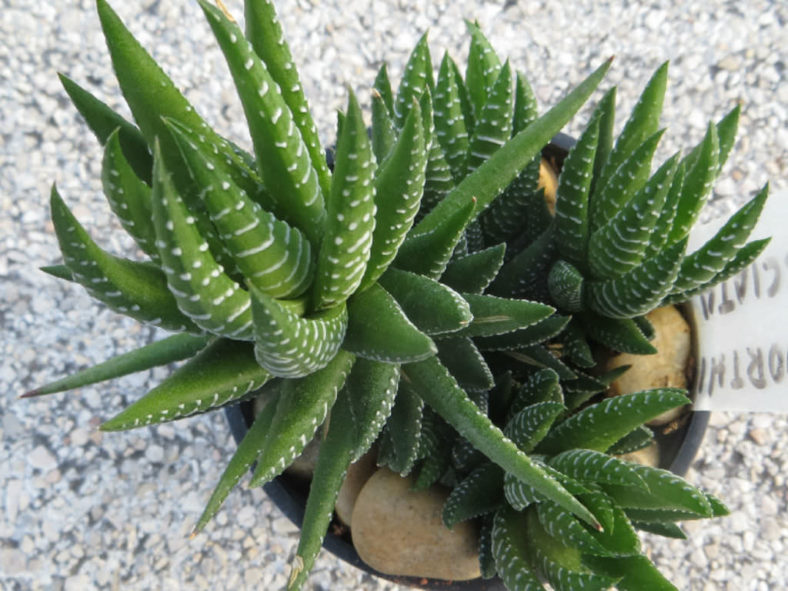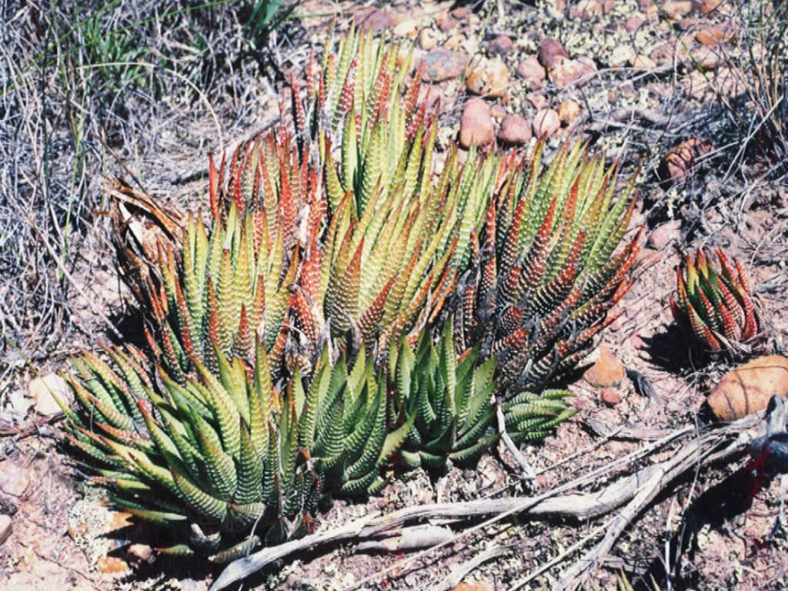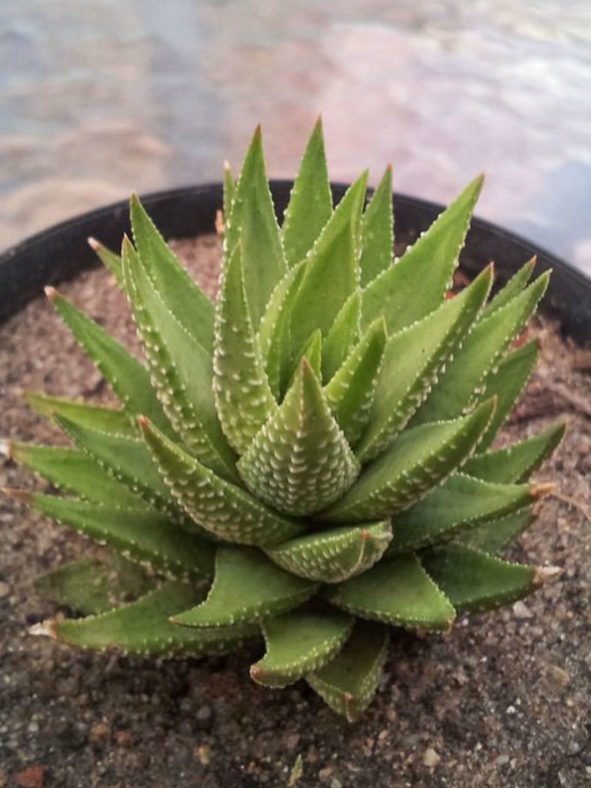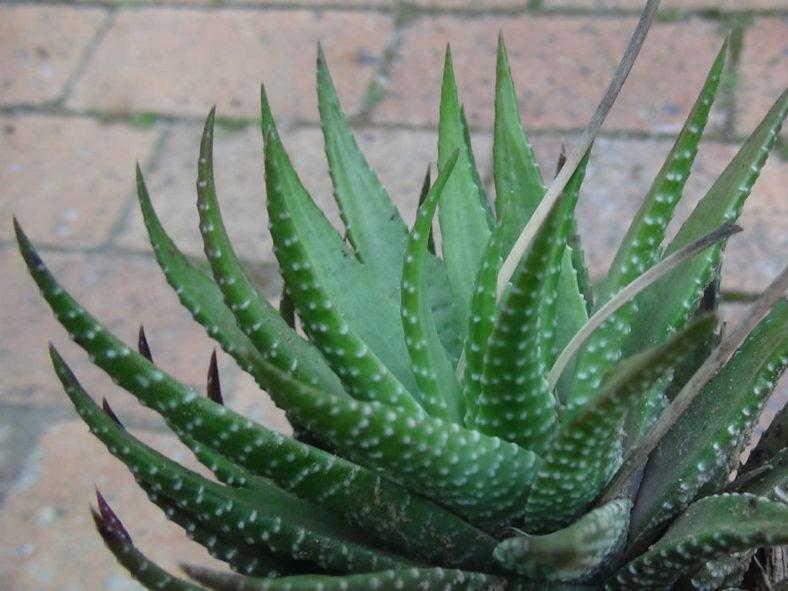Scientific Name
Haworthiopsis fasciata (Willd.) G.D.Rowley
Common Name(s)
Zebra Haworthia, Zebra Plant
Synonym(s)
Aloe fasciata, Apicra fasciata, Catevala fasciata, Haworthia fasciata, Haworthia pumila subsp. fasciata
Scientific Classification
Family: Asphodelaceae
Subfamily: Asphodeloideae
Tribe: Aloeae
Genus: Haworthiopsis
Etymology
The specific epithet "fasciata" (pronounced fash-ee-AY-tuh) means "bundled, banded" and refers to the banded leaves.
Origin
Haworthiopsis fasciata is native to South Africa (Eastern Cape).
Description
Haworthiopsis fasciata, formerly known as Haworthia fasciata, is a small succulent that forms rosettes of green, triangular leaves lined with white tubercles on the undersides. It offsets readily, forming a dense clump with age. The rosettes can reach up to 7.2 inches (18 cm) in height and 6 inches (15 cm) in diameter.
The white, tubular flowers appear in summer at the end of slender stalks that can grow up to 1 foot (30 cm) long.
Haworthiopsis fasciata is very similar to and often confused with Haworthiopsis attenuata, but they can be distinguished by the presence of the tubercles. Haworthiopsis fasciata has tubercles only on the undersides, while Haworthiopsis attenuata has tubercles on both the upper and lower surfaces of leaves.
Haworthiopsis fasciata is not common in cultivation, and many plants labeled as Haworthiopsis fasciata are actually Haworthiopsis attenuata.

How to Grow and Care for Haworthiopsis fasciata
Light: Although most species can tolerate full sun, these succulents thrive in semi-shaded positions. However, brighter light conditions are needed to bring out the leaf coloration.
Soil: Plant your Haworthiopsis in commercial soil formulated for succulents or make your own well-draining potting mix.
Hardiness: Haworthiopsis fasciata can withstand temperatures as low as 30 to 50 °F (-1.1 to 10 °C), USDA hardiness zones 10a to 11b.
Watering: In spring and fall, when the growth is most active, water Haworthiopsis thoroughly, then wait until the top of the soil dries out before watering again. Water your plants less during the winter when their growth slows down significantly. During the hottest summer months, when Haworthiopsis are typically dormant, water it just enough to keep the leaves from shriveling.
Fertilizing: Haworthiopsis are slow-growing succulents and do not require much fertilizer. Therefore, feed with a dilute fertilizer and only from spring to fall.
Repotting: When the plant has outgrown its container, repot it in the spring or early summer into a new, slightly larger pot with fresh soil.
Propagation: Haworthiopsis are mostly and easily grown from stem cuttings or by removing offsets from the mother plant.
Learn more at How to Grow and Care for Haworthiopsis.
Toxicity of Haworthiopsis fasciata
Haworthiopsis species are generally non-toxic to humans and animals.
Links
- Back to genus Haworthiopsis
- Succupedia: Browse succulents by Scientific Name, Common Name, Genus, Family, USDA Hardiness Zone, Origin, or cacti by Genus
Photo Gallery
Click on a photo to see a larger version.


